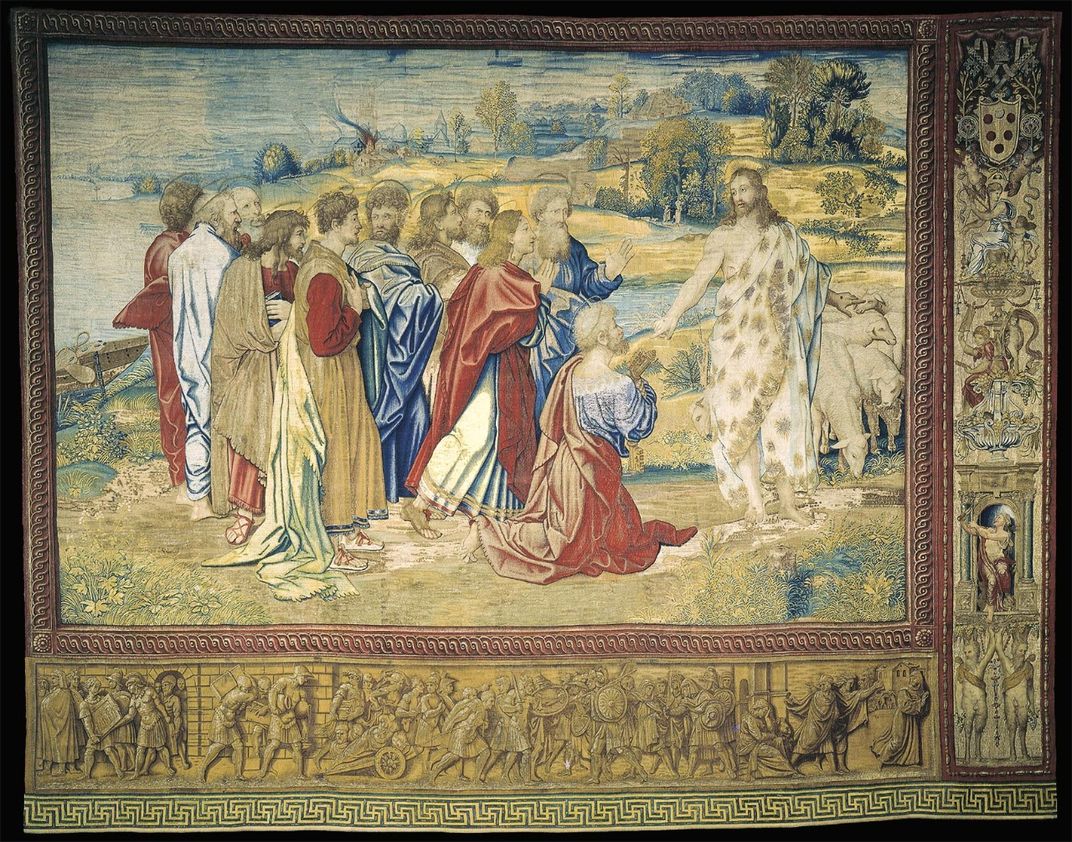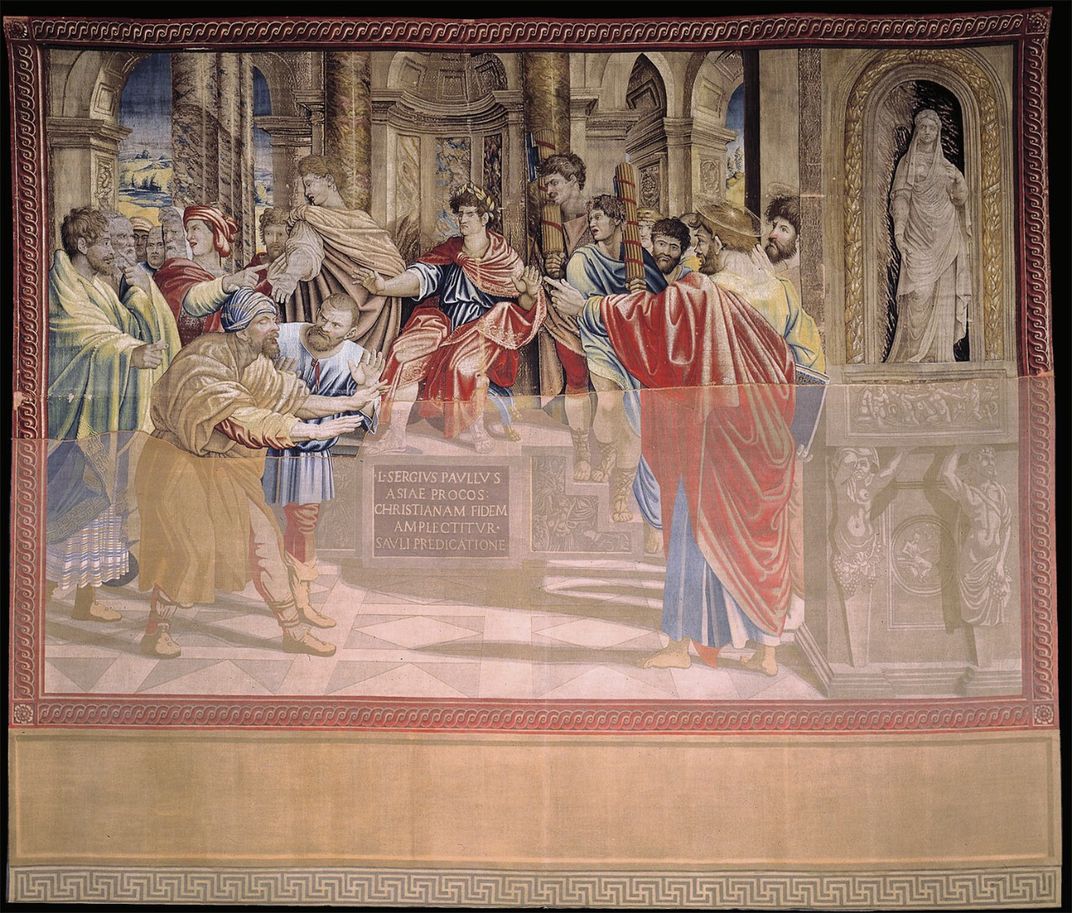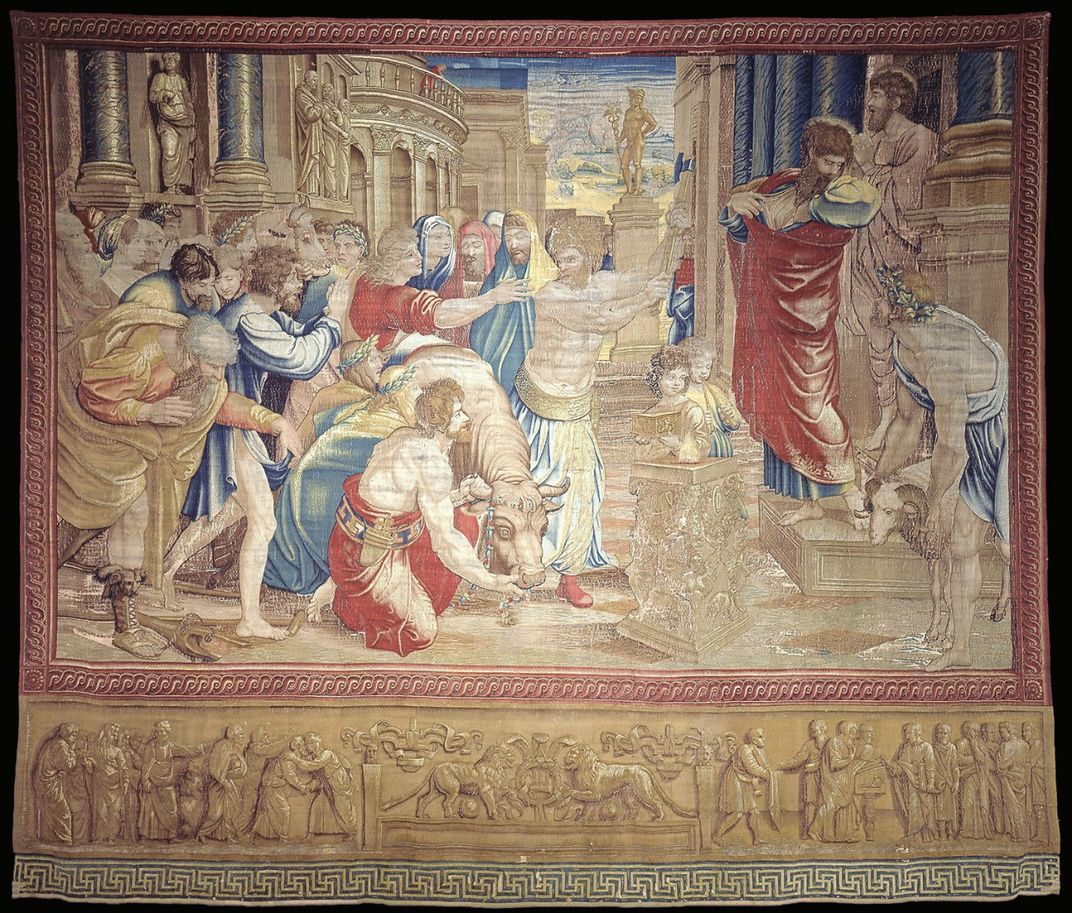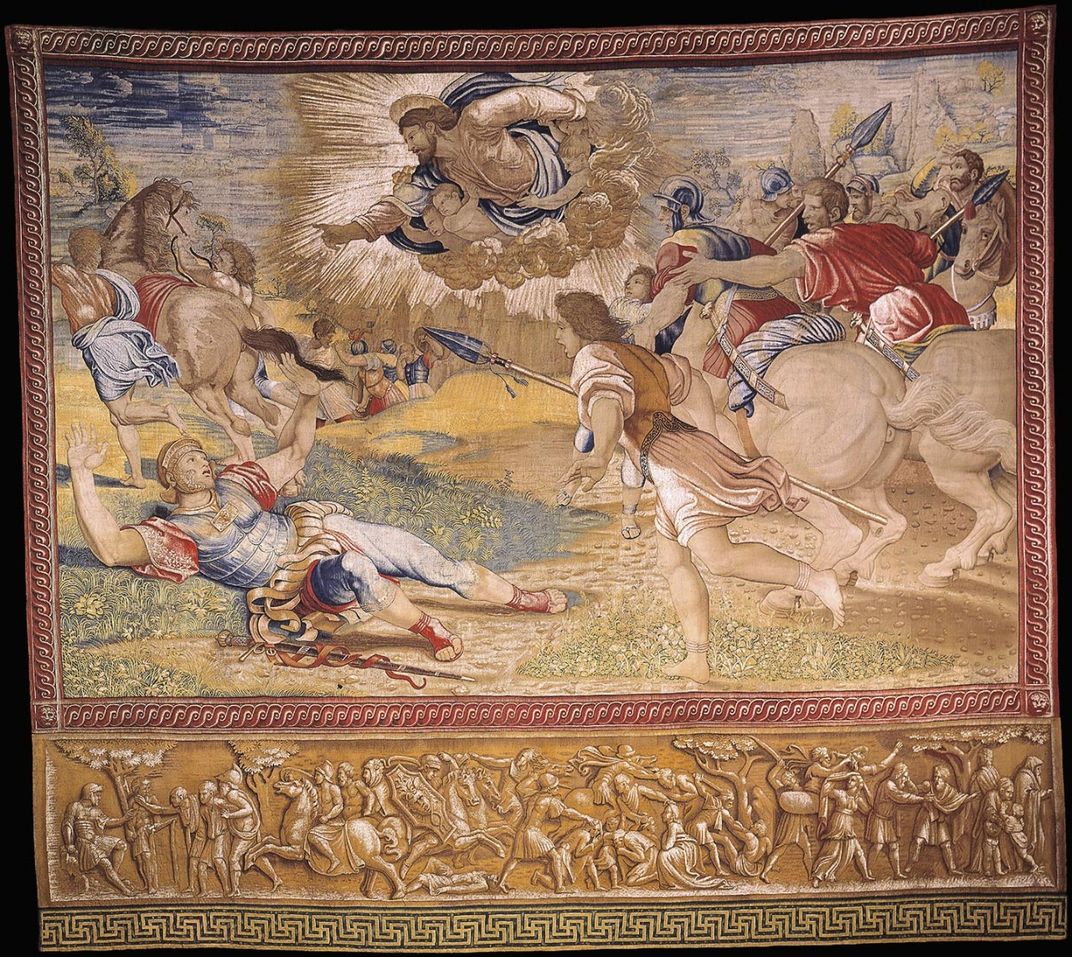For One Week Only, Raphael’s Tapestries Return to the Sistine Chapel
This is the first time all 12 of the Renaissance creations have been united in their original home since the 16th century
/https://tf-cmsv2-smithsonianmag-media.s3.amazonaws.com/filer/83/2a/832a58d0-6b73-4604-8b32-17299d0cead7/2020_feb18_raphaeltapestries.jpeg)
A dozen tapestries designed by Renaissance artist Raphael are currently on view in their original home—the Sistine Chapel—for the first time in more than 400 years. But there’s a catch: The fragile works, commissioned by Pope Leo X in 1515 to complement Michelangelo’s famed frescoes, will adorn the chapel’s walls for just one week.
The exhibition offers a rare chance to see the tapestries, which depict scenes from the lives of St. Peter and St. Paul, in their intended space rather than behind conservation glass. The last time the Vatican held a similar exhibit was in 1983, the fifth centennial of Raphael’s birth. According to Henry Kamm of the New York Times, only eight of the ten main tapestries made it into this display. At the time, one of the remaining works was on loan to a museum in New York; the other was undergoing restoration.
Now, in honor of the 500th anniversary of the artist’s death, the full set of ten masterworks and two border tapestries has returned to the Sistine Chapel for a limited engagement. As exhibition curator Alessandra Rodolfo tells Reuters’ Philip Pullella, the last recorded instance of all 12 tapestries being hung in the chapel together dates to the late 1500s.
“They were conceived for this space and so we thought it was the best way to celebrate,” Barbara Jatta, director of the Vatican Museums, tells Reuters.
Raphael probably never saw the full set of tapestries in person. Weavers in the workshop of Pieter van Aelst used cartoons, or full-size designs made by the artist, as references while creating the silk and wool tapestries between 1515 and 1521, per a statement from the Vatican Museum.
The Vatican unveiled seven of the 5- by 4-meter works on December 26, 1519. Master of ceremonies Paris de Grassis was reportedly so impressed by the tapestries that he said, “There will never be anything more beautiful on earth until the Last Judgement.”
Raphael was likely in attendance at the event, but he died of a sudden illness four months later at just 37 years old. The tapestries, which feature intricate details in silver and gold thread, were only displayed for major feasts and holidays, so Raphael probably only saw them once.
When the tapestries were hung to celebrate Raphael’s 500th birthday in 1983, few visitors to the Sistine Chapel realized the magnitude of what they were seeing, per the New York Times. This week, the chapel will operate with normal ticketing and operating hours, including free entry on Sunday.
“This place is of universal importance, not only for visual arts but for our faith,” says Jatta to Reuters. “So we really want to share this beauty with people, even if only for one week.”
The tapestries have traced a tumultuous path since their completion following Raphael’s untimely death. In 1527, soldiers from the Holy Roman Empire sacked Rome, terrorizing locals, wreaking mass destruction, and stealing artifacts including the tapestries, which were then sold piecemeal. An Italian noblewoman purchased two of the works, but they were looted by pirates and next popped up in a Tunisian market. From Tunisia, the tapestries somehow made their way to Constantinople, where they were acquired by a constable who returned them to the Vatican.
By the end of the 1500s, all of the tapestries had been recovered, but they were displayed in St. Peter’s Basilica and the Braccio di Constantino rather than the Sistine Chapel. In the late 18th century, Napoleon’s troops took the tapestries to Genoa and Paris before returning them to the Vatican in 1808. Since then, the Vatican Museum has displayed the tapestries on a rotation, and recently behind glass for conservation.
“These tapestries were born to be here, but cannot stay permanently in the chapel because of the damaging sweat and dust from visitors,” explains Rodolfo to the Times’ Tom Kington.
If a last-minute trip to Rome isn’t in the cards, don’t despair: The Sistine Chapel display is just one of a plethora planned for the 500th anniversary of Raphael’s death. Among others, the list of events includes a spring exhibition at Rome’s Scuderie del Quirinale, a fall show at London’s National Gallery and an ongoing display at the National Gallery of Art in Washington, D.C.



